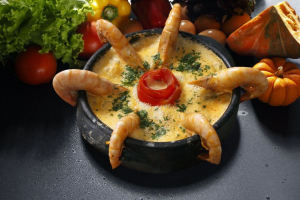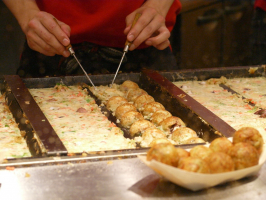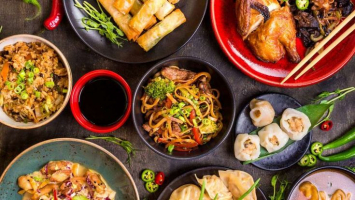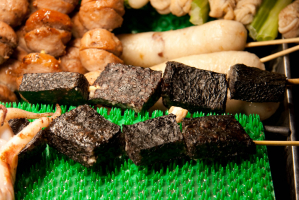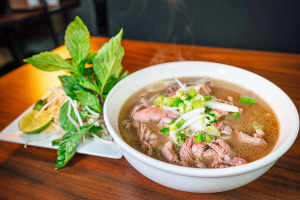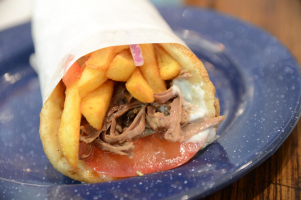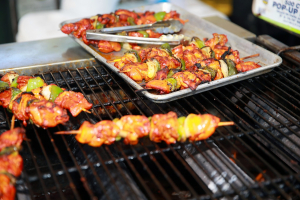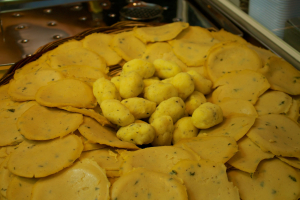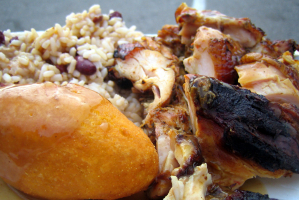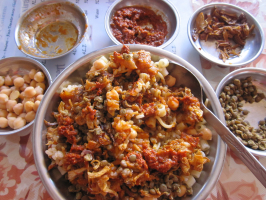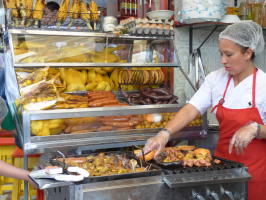Top 10 Best Street Foods in Brazil
When it comes to Brazil, besides its famous landscapes and people's hospitality, its street food has also left many deep impressions around the world. As a ... read more...tourist, if you are wondering what to eat on the streets of Brazil, please refer to the 10 best street foods in Brazil in this article.
-
A popular Brazilian delicacy called pamonha is created with freshly grated maize paste. It is cooked in boiling water after being snugly wrapped in fresh corn husks. Pamonha can be sweet or savory, depending on what's in them.
The savory variations are typically made with cheese, sausages, or chopped meat, although they can be served plain. One of the best examples of savory pamonha is pamonha salgada. It's a version loaded with cheese. It has a nice amount of melty white cheddar and parmesan cheese with less sugar in the dough. It tastes pretty much like Brazilian cheese bread. A common method for making the sweet variant of pamonhas is to mix coconut pulp or milk into the dough.
Year-round, the pamonha is also enjoyed as a tasty, straightforward dessert that can be tailored to every individual's preferences. The northeast of the nation celebrates a specific holiday called the Festa Junita, during which copious amounts of pamonha are offered. Commencing annually on June 13th, this celebration honors the harvest of crops and the arrival of Brazil's winter season.
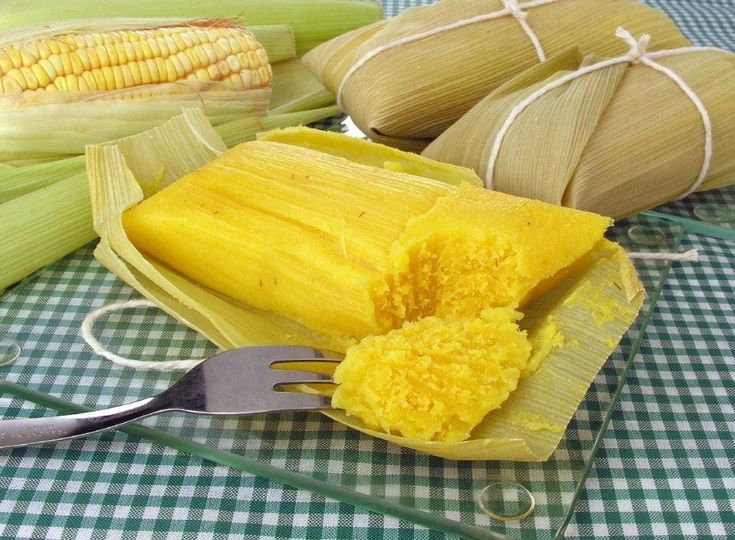
Screenshot of https://www.pinterest.com/pin/531072981071856922/ Video by Simply Mamá Cooks -
Brazilian dessert açaí na tigela originates in Pará and Amazonas, where it is routinely made by the Ribeirinhos community. This cuisine, which is described as having an "earthy" or creamy taste, is produced with the frozen and mashed fruit of the açaí palm. Prior to blending, it has a granular texture and a pleasant tartness from a high acidity level. This dish is loved by many people, especially women and children.
Acai na tigela can be consumed in many ways, but one of the best is as a frozen puree, similar to sorbet, and served with granola and fresh fruit. This smoothie in a bowl is sweet, tangy, and crunchy from the granola, and it also packs a refreshing punch. It has the potential to provide numerous nutritional and health advantages, as well as satisfy your hunger and relieve heat. Because of its great taste and health benefits, acai na tigela has become one of the best street foods in Brazil.
Açaí na tigela is a popular beverage throughout Brazil, its consumption has been increasingly concentrated in certain areas, particularly in Pará, Rio de Janeiro, Florianópolis, São Paulo, Goiás, and the northeastern coast. These cities sell the beverage from kiosks along beach promenades and from juice bars.

Screenshot of https://www.pinterest.com/pin/52846995614121434/ 
Screenshot of https://www.pinterest.com/pin/585397651579635585/ -
The next Brazilian street food is brigadeiro, which is known as a typical dessert in the country. Although the dessert's origin is unknown, the most widely accepted theory holds that Heloisa Nabuco de Oliveira, a Rio de Janeiro confectioner, invented it to support Eduardo Gomes's presidential campaign. The outer layer is covered with chocolate sprinkles and the ingredients include butter, condensed milk, and cocoa powder.
Across the nation, brigadeiro is a well-liked treat, particularly for festive occasions. Brigadeiros can be purchased from bakeries, and snack shops or on the street. Usually, it is formed into tiny balls, coated in chocolate sprinkles, and put inside a tiny cupcake liner. Another option is to transfer the mixture into a tiny container and eat it with a spoon. Brigadeiro is currently present in several nations due to migration from Brazil.
Variations in coating and flavor of the classic chocolate brigadeiro have gained popularity in recent years. This fad of many dishes, including cakes, tarts, ice cream, and even bread, was sparked by the easy manipulation of the original treat and its variety of flavors.
Brigadeiro is often served at children's birthday parties or as a dessert after a meal. Try making it for your family with the Brazilian street food recipe below.
- Put 100g pure cocoa powder, 400g sweetened condensed milk, and 30g butter into the pot and simmer. Stir until it begins to thicken, a process that takes about 10 minutes.
- Turn off the heat and pour the chocolate mixture into a glass mold with a little butter. Let the mixture cool completely then put it in the refrigerator for 30 minutes.
- When the mixture has cooled, I took it out, smeared a little butter on the palm of my hand, and then rolled each candy into a ball. The outside is covered with a layer of chocolate sprinkles.

Screenshot of https://www.pinterest.com/pin/1004021310651205090/ Video by The Cooking Foodie -
Kibe is a popular street food in Brazil that originated from Middle Eastern cuisine. This savory snack has become a beloved staple among Brazilians, with its unique blend of flavors and textures. Kibe is widely available across Brazil, often found in street markets, food fairs, and even in some restaurants.
Kibe typically consists of ground beef or lamb mixed with bulgur wheat, onions, garlic, and a variety of spices such as cinnamon, allspice, and mint. This mixture is traditionally shaped into small, oblong patties and deep-fried until crispy and golden brown.
While kibe is traditionally made with beef or lamb, variations with chicken or vegetarian options have gained popularity as well. These alternatives provide options for those who prefer different protein sources or follow specific dietary restrictions.
In many street food stalls and food trucks across Brazil, kibe is often served with a side of hot sauce or yogurt-based dips, adding an extra kick of flavor. Kibe is not only delicious but also offers a satisfyingly hearty and filling experience. Its crunchy exterior gives way to a tender and flavorful center, making it a perfect option for those looking to enjoy a satisfying meal on the go.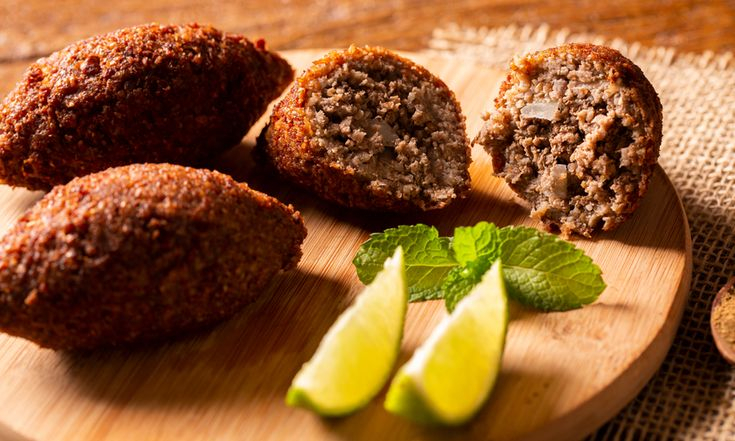
Screenshot of https://www.pinterest.com/pin/395261304803105932/ 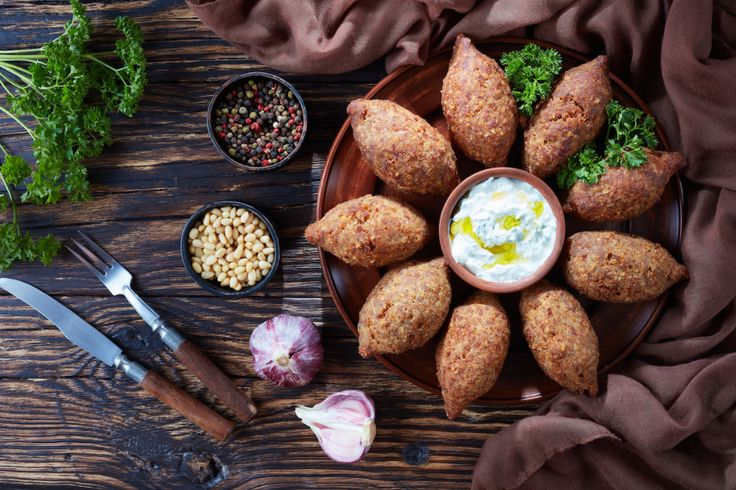
Screenshot of https://www.pinterest.com/pin/744782857141658651/ -
Regarding the best street foods in Brazil, picanha is an unavoidable name. It is made up of the animal's fat cap and the last segment of the biceps femoris muscle. The cut has acquired popularity in most of Latin America and a reputation as a good meat in the barbecue community in recent years.
Though Brazilian cooks usually work with big pieces of meat, your meal will never be overly raw or dry. Before serving, it must be cooked to the exact degree that you requested in order to give you the most possible picanha flavor. In Brazil, the meat is traditionally prepared by skewering it and grilling it over charcoal, using only sea salt as a condiment. Just the first bite you will feel the rich flavor that picanh brings.
A robust, savory beef dish is picanha. As so, it goes nicely with almost any side dish, including garlic mashed potatoes and crisp salads. You ought to get a helping of our potato salad topped with some crispy bacon, Brazilian black beans, or a side of our au gratin potatoes. For a genuinely decadent experience, try it with a Brazilian cheesecake slice and a glass of Cabernet Sauvignon.
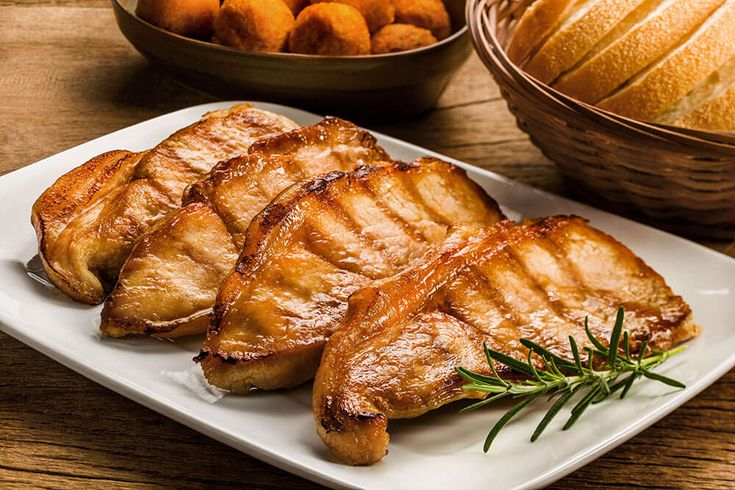
Screenshot of https://www.pinterest.com/pin/783063453935045943/ 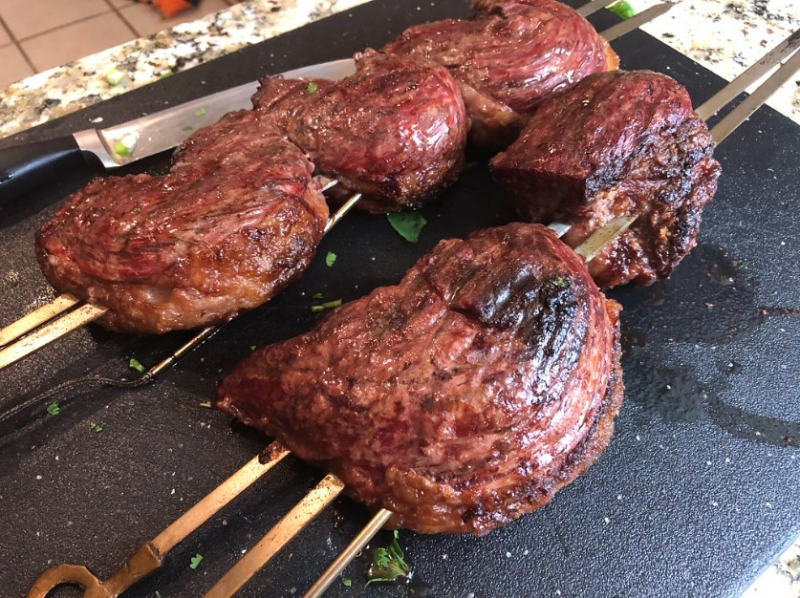
Photo on flickr https://www.flickr.com/photos/wfryer/50889669501 -
Pastel de queijo is a popular Brazilian street food. The southeast is where this delicious deep-fried delight is most well-liked, especially in São Paulo and the neighboring areas. The recipe for Pastel de queijo is not traditional Brazilian. In reality, it is a culinary invention of Japanese communities who migrated to this nation during World War II. These days, São Paulo residents consider this little fried delicacy to be vital.
In essence, pastel de queijo are hand pies that can be filled with a variety of delectable savory and sweet ingredients. This delicacy can be stuffed with a heart of palm, melted cheese, or ground beef. To satisfy the desire of those with a sweet tooth, they can use chocolate, caramel, or fruits for the pastel filling; however, the majority of Brazilians prefer the savory versions. To prevent greasy feelings during eating, the outside will be incredibly thin and crispy.
In Brazil, pastel de queijo is sold everywhere street food is sold, along with other things. They are a staple of the market, a great bar snack, and even have stores called Pastelaria that specialize in pastel de queijo goods. The dish is typically larger, more hand-sized, and rectangular in shape if you encounter them at a market. This is a much heartier variation that's ideal for a quick lunch.
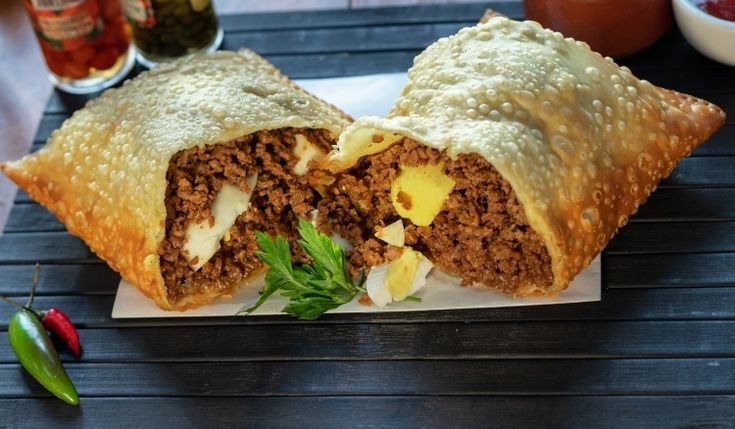
Screenshot of https://www.pinterest.com/pin/748230925604417053/ 
Screenshot of https://www.pinterest.com/pin/654781233340822781/ -
In Brazil, pao de queijo, often known as Brazilian cheese bread, is a common afternoon snack and morning meal. This is a classic Brazilian recipe that comes from Minas Gerais state. The characteristic flavor of pao de queijo is imparted by the cheese.
Brazilian, some using sour starch, some using sweet starch or even both. However, the fundamental characteristic of pao de queijo is that it is made with some sort of cheese and cassava starch. The dough's elastic texture is facilitated by the molecular lubrication provided by lard, vegetable oil, butter, or margarine. Minas cheese, mozzarella, and parmesan are the most commonly used for this dish.
Pao de queijo is cheap and frequently sold by street sellers with a container to keep heat in. you can usually find it either freshly baked or industrialized in bakeries, supermarkets, and grocery stores in Brazil. Also, a lot of people in northern Argentina eat it.
The recipe for pao de queijo is easy to make and only requires a few common household items. This snack is ready in thirty minutes. The recipe tastes much better with a cup of coffee. View the comprehensive step-by-step instructions.
- Put 250 grams of sweet cassava starch in a bowl.
- Put one cup of milk, one-half cup of oil, and one teaspoon of salt in a pan. Allow to boil.
- Next, pour the blend into the basin containing the sweet cassava starch. Stir until the mixture cools.
- Add a cup of grated semi-hard cheese and one egg. Stir until the dough becomes wet.
- Scoop out tiny amounts of dough with a spoon after rubbing oil on your hands. Using the dough, form balls.
- After placing the balls in a mold, bake them for about 20 minutes at 200 degrees in a preheated oven.
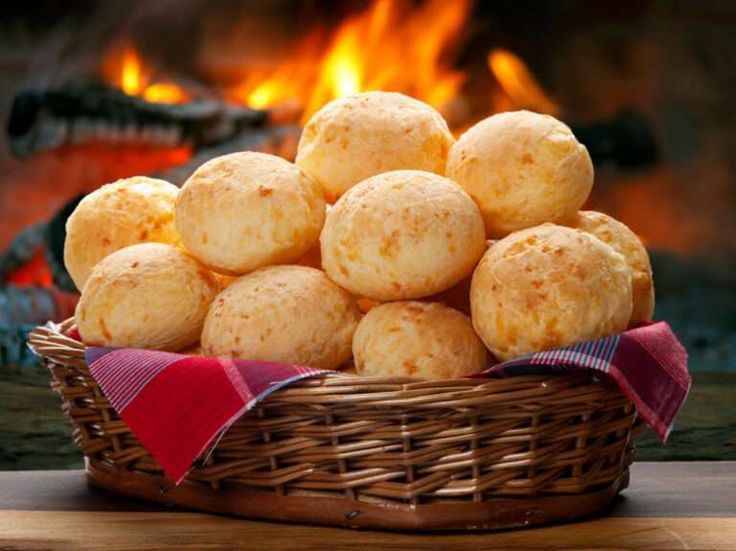
Screenshot of https://www.pinterest.com/pin/975662706748536450/ 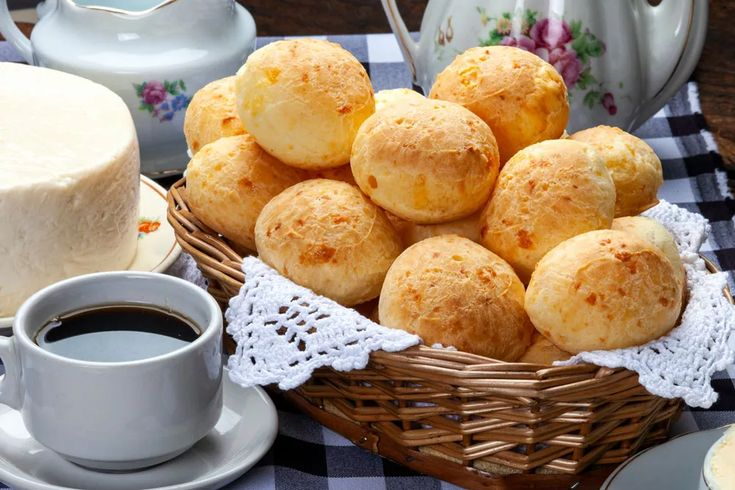
Screenshot of https://www.pinterest.com/pin/862861609871888183/ -
Cowpeas or black-eyed peas from Yorubaland in Nigeria, Togo, and Benin are used to make the type of fritter known as acarajé. It is present in Brazilian, Caribbean, and West African cuisines. The northeastern Brazilian state of Bahia, particularly the city of Salvador, is where the dish is typically found. Agarajé is a religious tribute to the gods in the Candomblé faith. It is also known as one of the best street foods in Brazil.
Brazilian acarajé is created from raw, milled cowpeas that are seasoned with salt and chopped onions. The cowpeas are then formed into the shape of a giant scone and deep-fried in front of customers using a dendê pan that resembles a wok. The dish is presented in two sections and filled with hot pastes known as vatapá and caruru, which consist of ground cashews, ground shrimp, palm oil, and additional spices.
Green tomatoes and spicy peppers are classic accompaniments to a vegetarian dish. Abará, a variation of acarajé in which the contents are steamed rather than deep-fried, is another option.
The National Institute of Historic and Artistic Heritage designated acarajé as a national intangible historic heritage in 2004. The same legislation also acknowledged the contribution of baianas (women who sell acarajé) in the preparation and sale of acarajé. This fritter was officially recognized as a part of Rio de Janeiro's cultural heritage in October 2023.
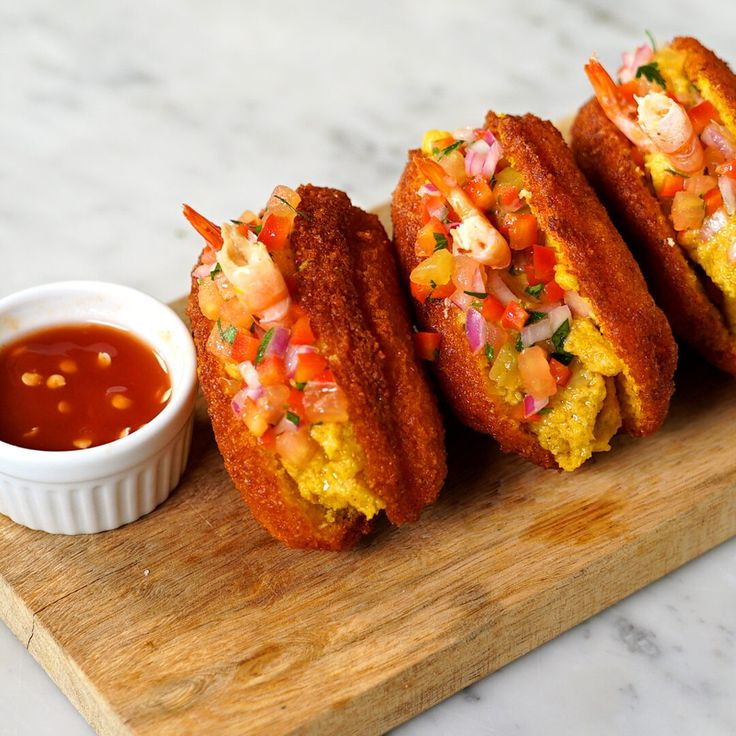
Screenshot of https://www.pinterest.com/pin/402368547971455319/ 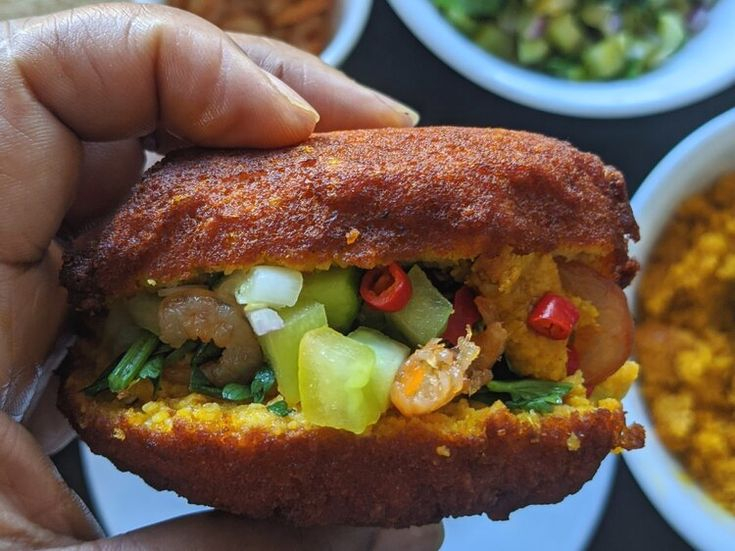
Screenshot of https://www.pinterest.com/pin/619033911303961278/ -
Bolinhos de Bacalhau is typically made with salted codfish, potatoes, onions, garlic, parsley, and eggs. The salted codfish is soaked and cooked until it becomes tender, then it's flaked and combined with the other ingredients. The mixture is shaped into small fritters and deep-fried until golden brown and crispy.
Bolinhos de Bacalhau is a harmonious combination of flavors and textures. The saltiness of the codfish pairs well with the creamy potatoes and aromatic herbs, creating a harmonious blend of savory goodness. Every mouthful is a joy as the crispy outside gives way to a soft and tasty interior.
Bolinhos de Bacalhau is not only a tasty treat but also a cultural experience. They represent unique culinary delight that showcases the rich heritage and diversity of Brazilian gastronomy. Bolinhos de Bacalhau is a mainstay at Easter meal and a street food loved by locals and tourists.
If you haven't had the chance to go to Brazil, you can try making this dish at home with just the simple recipe below.
- Half a tablespoon of garlic and two tablespoons of finely chopped onion should be sautéed until golden in a skillet with one tablespoon of olive oil.
- Spoon the stew into a bowl.
- Add 200 grams of cooked and shredded fish, 2 medium potatoes, 1 beaten egg, 1/4 cup breadcrumbs, 1 tablespoon olive oil, finely chopped parsley, powdered black pepper, and salt to taste. Mix thoroughly to make a uniform dough.
- Form tiny balls out of the dough and deep-fry them in hot oil until they turn brown. Remove, then set aside to drain on paper towels.
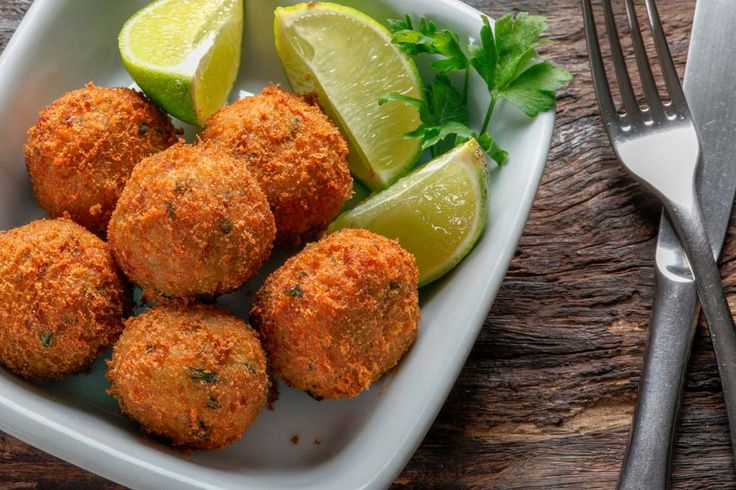
Screenshot of https://www.pinterest.com/pin/303500462390293061/ 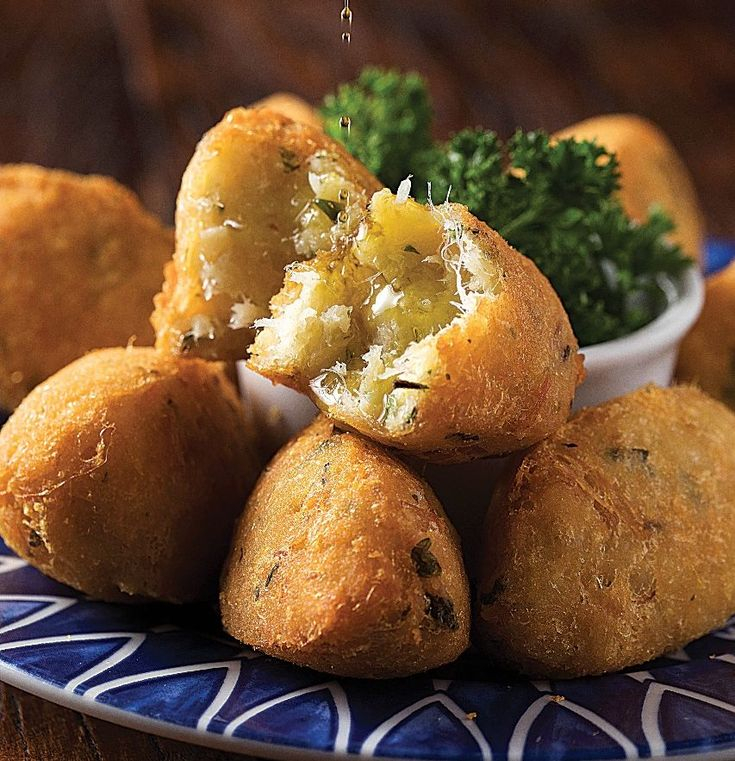
Screenshot of https://www.pinterest.com/pin/1074671529815370024/ -
Coxinha is the last name mentioned in the list of the best street foods in Brazil. It is made of shredded or chopped chicken meat that has been coated in dough, formed into the shape of a teardrop, fried, and then battered.
The foundation of the coxinha is a dough made of wheat flour, chicken broth, and, if desired, mashed potato. This dough is then filled with either a whole chicken drumstick or shredded, flavored chicken meat. The stuffing is made up of chicken, onions, parsley, scallions, and sometimes tomato sauce and turmeric along with catupiry cheese or requeijão.
The coxinha is deep-fried after being covered in batter, bread crumbs, or manioc flour. Its form is similar to that of a drumstick from a chicken. To improve the coating's flavor, the dough used to coat the filling is typically made using chicken broth.
A few modern adaptations of the original are becoming increasingly common. One such is the coxinha mineira, which gets its name from the use of maize in the filling. This dish is popular in the state of Minas Gerais as well as in regions where the caipira and sertanejo dialects are spoken. Snack bars also serve a lot of cheese coxinha. Local restaurants in Curitiba serve chicken coxinhas stuffed with cheddar and Araucaria nuts.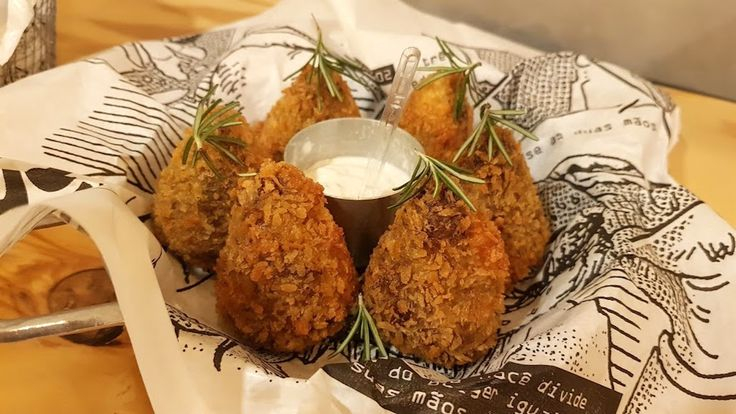
Screenshot of https://www.pinterest.com/pin/655344183294502566/ 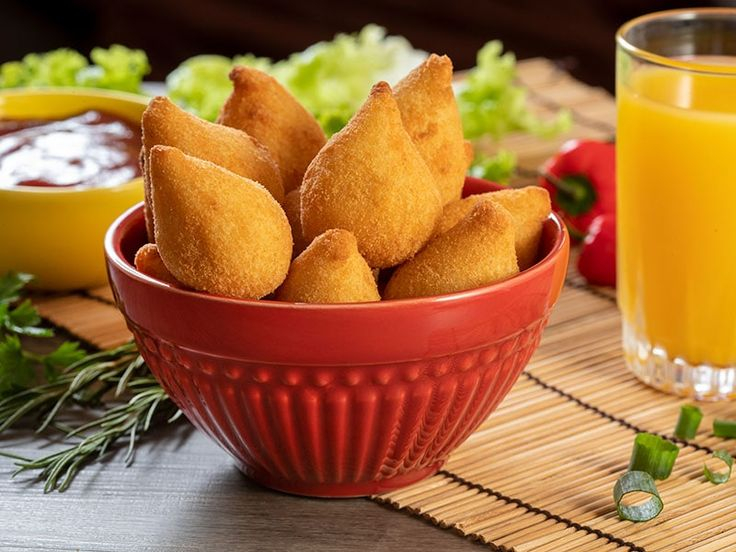
Screenshot of https://www.pinterest.com/pin/808677676864714574/












